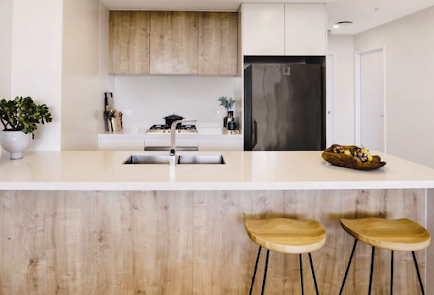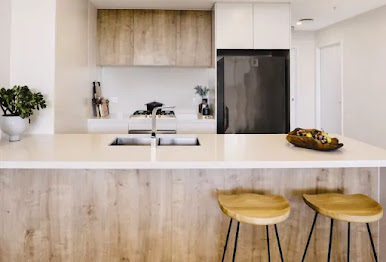Board Formed Concrete | LF Construction Services
Board form concrete, also known as board-formed concrete or wood-textured concrete, is a technique used in construction to achieve a distinct texture on the surface of concrete walls or structures. It involves using wooden boards as formwork, which are placed against the concrete surface before pouring and left in place until the concrete sets.
Here's a general overview of the process:
Preparing the formwork: The formwork consists of wooden boards arranged vertically or horizontally, depending on the desired pattern. The boards are typically made of high-quality wood, such as redwood or cedar, as they provide better texture and durability. The boards are cleaned, sealed, and properly aligned to ensure a consistent pattern.
Pouring the concrete: Once the formwork is ready, concrete is poured into the space between the formwork and the existing structure. The concrete should have the desired mix and consistency suitable for the project.
Vibrating and leveling: After pouring the concrete, it's important to vibrate the formwork to eliminate air pockets and ensure proper compaction. A vibrating tool or vibrator is used to achieve this. The concrete surface is then leveled using screed boards or other leveling tools to achieve a smooth, even finish.
Curing and drying: The concrete needs sufficient time to cure and harden. It's essential to follow proper curing techniques, such as covering the concrete with plastic sheets or using curing compounds, to prevent rapid moisture loss. Curing time can vary depending on factors like temperature, humidity, and concrete mix.
Stripping the formwork: Once the concrete has cured sufficiently, the formwork can be removed. Care should be taken to prevent damage to the concrete surface. The removal of the boards reveals the textured pattern left by the wood grain, resulting in the desired board-formed concrete finish.
Finishing and sealing: After the formwork is removed, the concrete surface can be further finished and sealed, if desired. Finishing techniques like sanding, brushing, or applying chemical treatments can enhance the appearance and texture of the board-formed concrete. Additionally, applying a suitable sealer can protect the surface from moisture, stains, and other environmental factors.
Board form concrete offers a visually appealing and unique aesthetic, with the texture and pattern of the wood grain imprinted on the concrete surface. It is often used in architectural designs to create a rustic, modern, or industrial look in buildings, retaining walls, facades, and other concrete structures.
Here's a general overview of the process:
Preparing the formwork: The formwork consists of wooden boards arranged vertically or horizontally, depending on the desired pattern. The boards are typically made of high-quality wood, such as redwood or cedar, as they provide better texture and durability. The boards are cleaned, sealed, and properly aligned to ensure a consistent pattern.
Pouring the concrete: Once the formwork is ready, concrete is poured into the space between the formwork and the existing structure. The concrete should have the desired mix and consistency suitable for the project.
Vibrating and leveling: After pouring the concrete, it's important to vibrate the formwork to eliminate air pockets and ensure proper compaction. A vibrating tool or vibrator is used to achieve this. The concrete surface is then leveled using screed boards or other leveling tools to achieve a smooth, even finish.
Curing and drying: The concrete needs sufficient time to cure and harden. It's essential to follow proper curing techniques, such as covering the concrete with plastic sheets or using curing compounds, to prevent rapid moisture loss. Curing time can vary depending on factors like temperature, humidity, and concrete mix.
Stripping the formwork: Once the concrete has cured sufficiently, the formwork can be removed. Care should be taken to prevent damage to the concrete surface. The removal of the boards reveals the textured pattern left by the wood grain, resulting in the desired board-formed concrete finish.
Finishing and sealing: After the formwork is removed, the concrete surface can be further finished and sealed, if desired. Finishing techniques like sanding, brushing, or applying chemical treatments can enhance the appearance and texture of the board-formed concrete. Additionally, applying a suitable sealer can protect the surface from moisture, stains, and other environmental factors.
Board form concrete offers a visually appealing and unique aesthetic, with the texture and pattern of the wood grain imprinted on the concrete surface. It is often used in architectural designs to create a rustic, modern, or industrial look in buildings, retaining walls, facades, and other concrete structures.
.webp)



Comments
Post a Comment